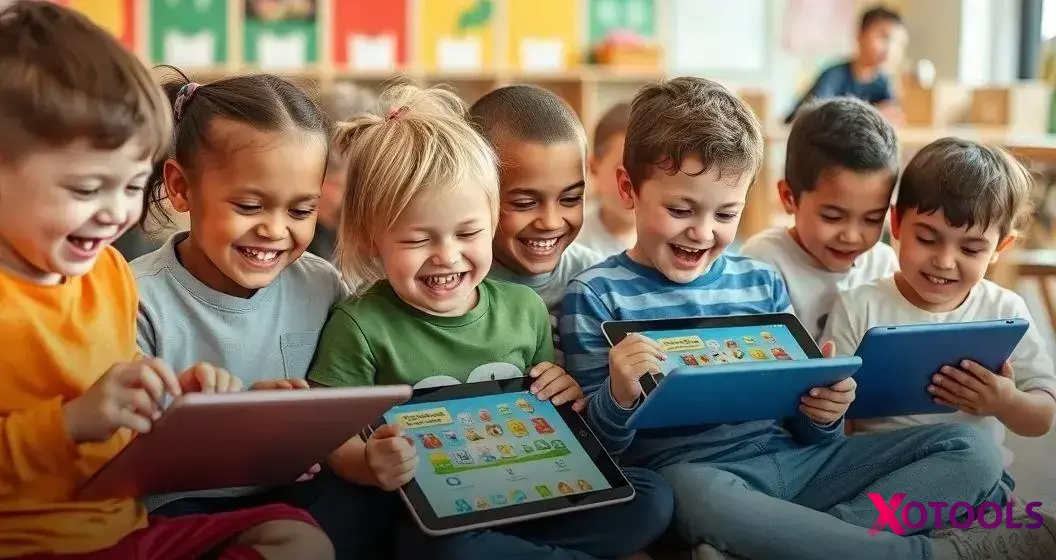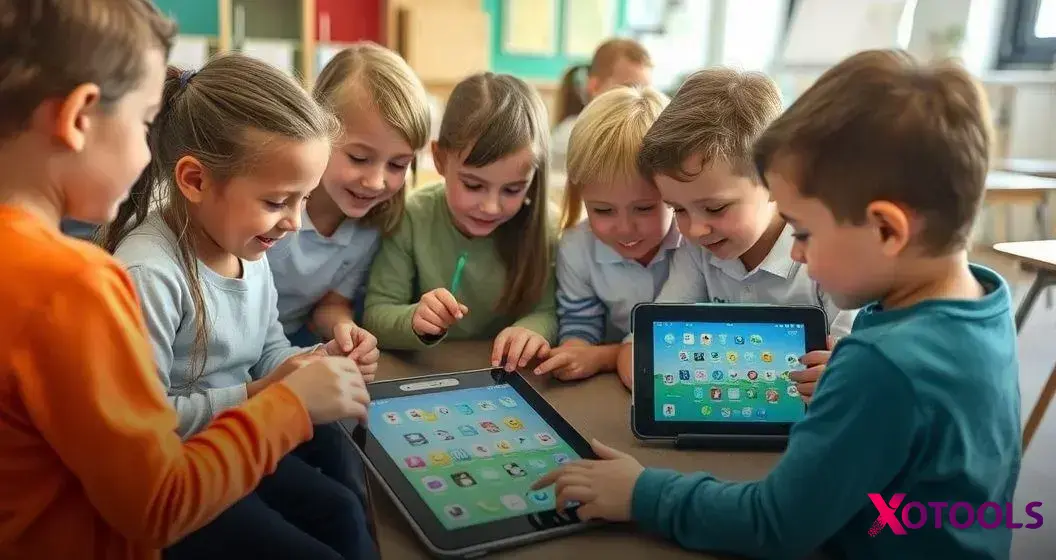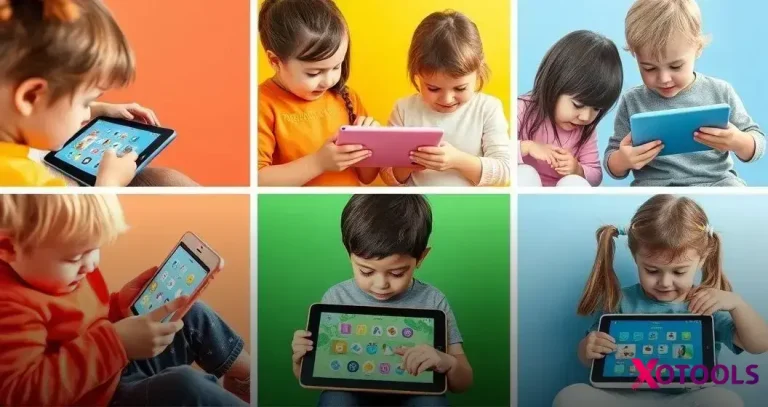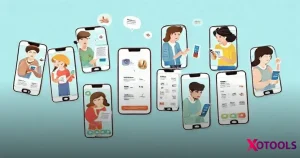ADVERTISEMENT
Choosing educational apps suitable for children can make learning enjoyable and effective. With countless options, it’s crucial to find apps that not only engage kids but also foster real learning. Parents and educators can benefit from understanding which apps support skill development and creativity.
Many parents wonder how to balance technology use while ensuring it supports their children’s growth. By examining different apps and their specific strengths, it’s possible to find those that resonate with each child’s needs.
Keep reading to discover the best apps that can transform learning experiences for children and make education exciting!
What Are Educational Apps?
Educational apps are software applications designed to help children learn new ideas and skills through interactive and engaging methods. These apps cover a wide range of subjects, such as math, reading, science, and even art. They provide fun ways for kids to explore topics at their own pace, making learning enjoyable.
Many educational apps use games and challenges to encourage children to think critically and solve problems. Gamification makes learning feel less like a chore and more like a fun activity. Children often don’t realize they are learning because they are too busy playing!
Parents and educators love these apps because they help track progress and offer personalized learning experiences. Educational apps can adapt to a child’s strengths and weaknesses, providing a tailored approach that meets their specific needs and interests.
Benefits of Educational Apps for Kids
Educational apps for kids offer a range of benefits that enhance learning experiences. These apps provide instant feedback, allowing children to see how well they are doing and where they can improve. This immediate response helps to keep kids motivated and engaged as they learn.
Another advantage is the flexibility that educational apps provide. Kids can learn anytime and anywhere, fitting their studies into their busy lives. Whether they are at home or on the go, these apps make learning accessible and fun, so children can explore topics they are curious about.
Moreover, many educational apps promote critical thinking and problem-solving skills. By using interactive challenges and games, kids can develop their skills while having fun. These apps allow children to learn at their own pace, creating a safe space for them to experiment, make mistakes, and grow.
Top Educational Apps for Different Ages

When it comes to choosing educational apps, it’s important to consider the age of the child. For younger kids, ages 3 to 5, apps like Endless Alphabet and ABCmouse are excellent choices. These apps use colorful graphics and fun sounds to engage little ones, helping them learn letters, words, and basic math through play.
For children aged 6 to 8, apps such as Prodigy Math and Starfall offer more advanced content while still being entertaining. These apps include games and challenges that make learning subjects like math and reading lively and enjoyable. Kids can even track their progress, which motivates them to keep learning.
Lastly, for older children, ages 9 and up, apps like Khan Academy and Duolingo introduce more complex subjects like science and foreign languages. These apps cater to older students by helping them delve deeper into their studies with a range of lessons and interactive quizzes that fit their growing intellect.
How to Choose the Right App
Choosing the right educational app starts with understanding your child’s needs. Consider their age and learning level. For younger kids, look for apps that focus on basic skills like counting or letters with bright colors and engaging sounds. Older kids might benefit more from apps that challenge them and encourage deeper thinking, such as problem-solving games or apps offering foreign language lessons.
Another important factor is interactivity. Apps that provide hands-on activities like puzzles, quizzes, and creative tasks keep children engaged for longer. Read reviews from other parents and teachers to see which apps have helped kids stay focused and excited about learning. Quality apps often include feedback that allows kids to see their progress, which can boost their confidence.
Lastly, always check for safety features. Ensure the app is secure and has proper parental controls. Many educational apps allow parents to set limits on screen time and track their child’s learning progress. A good app will combine fun learning experiences with safety to create an ideal educational environment.
Parental Controls and Safety Features
When selecting educational apps, parental controls are a critical feature to consider. These controls allow parents to limit screen time, manage in-app purchases, and restrict content access. By adjusting these settings, parents can ensure their children use the app safely without distractions or harmful material. It gives parents peace of mind while children explore educational content.
Another beneficial aspect of many educational apps is their safety features. Many apps offer secure environments where children can learn and interact without the risks of online interactions. Features such as anonymous profiles and the ability to turn off chat functions help protect children from unwanted interactions with strangers, ensuring a safer experience.
Additionally, some apps provide progress tracking for parents. This feature allows parents to monitor their child’s learning pace and accomplishments. By reviewing this information, parents can tailor the learning experience to their child’s needs and interests, making their educational journey more effective and personalized.
Integrating Apps into Learning

Integrating educational apps into learning can create a more engaging experience for children. By using these apps alongside traditional teaching methods, students can apply what they learn in real-time. For example, a math lesson may be supplemented with a fun app that practices arithmetic through games, reinforcing the concepts taught in class.
Teachers can also encourage collaboration by having students use apps that allow them to work together on projects. This interaction helps build teamwork skills and makes learning more enjoyable. Group activities through apps can enhance understanding of challenging subjects by allowing students to share ideas and support one another.
Finally, it’s essential to choose apps that align with the curriculum. When educators select apps that complement their lessons, they provide valuable resources without straying from educational goals. This alignment ensures that the time spent on devices is productive and supports the overall learning objectives set for the students.
Creating a Balanced Screen Time
Creating a balanced screen time is essential for children, especially when using educational apps. Setting clear limits on how long kids can use their devices each day helps maintain their overall well-being. For younger children, it’s often recommended to engage in screen time for no more than one hour a day. This ensures they have ample time for other activities like outdoor play, reading, and family interaction.
In addition to time limits, practical breaks during screen use can enhance learning. Encourage kids to take short breaks every 20 to 30 minutes to stretch or move around. These breaks can help refresh their minds and reduce eye strain, making their learning more effective when they return to the app.
Finally, balancing screen time involves family involvement. Parents should consider using educational apps together with their children. This not only allows parents to monitor usage but also creates bonding opportunities. Engaging with the content as a family can deepen understanding and make learning a fun, shared experience.
Future Trends in Educational Apps for Kids
As technology advances, future trends in educational apps for kids will focus on personalized learning experiences. With the help of artificial intelligence, apps can adapt to each child’s unique learning style and pace.
This means that instead of a one-size-fits-all approach, children will receive tailored content that meets their specific needs, making learning more effective and enjoyable.
Another exciting trend is the use of virtual reality (VR) and augmented reality (AR) to create immersive learning environments. These technologies can transport children to different worlds, allowing them to explore historical sites, dive into the ocean, or travel through space—all from the comfort of their homes.
This hands-on experience helps deepen understanding and keeps kids engaged by making learning feel like an adventure.
Finally, educators and app developers are recognizing the importance of social interaction in learning. Future apps are likely to incorporate features that allow for collaboration among peers, such as sharing projects or solving puzzles together. This not only makes learning more fun but also teaches valuable teamwork skills that are essential in the real world.







